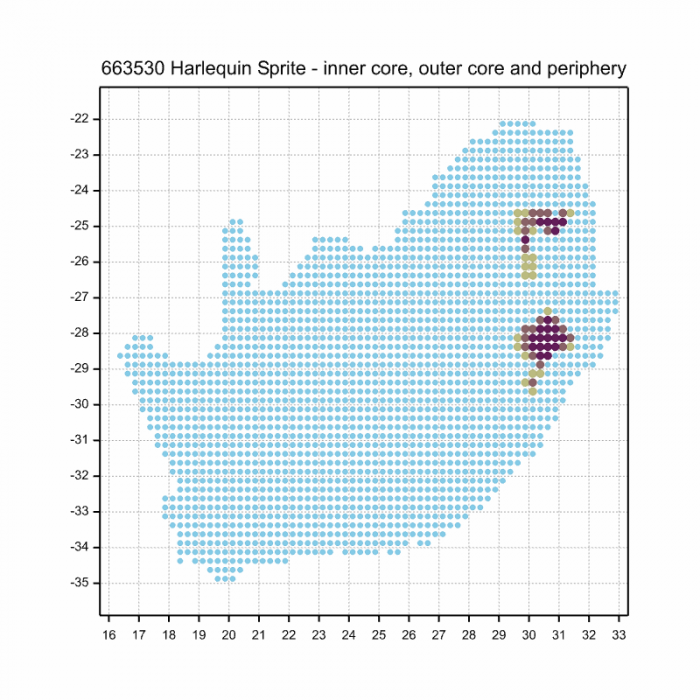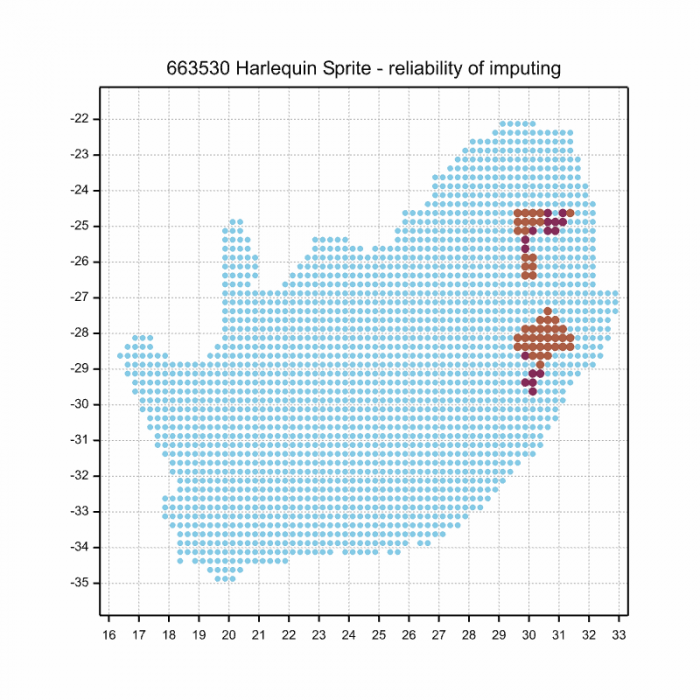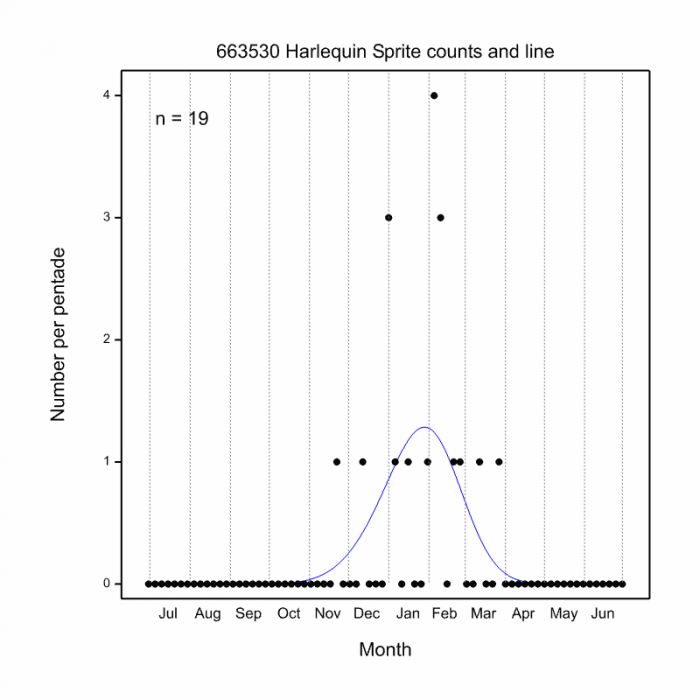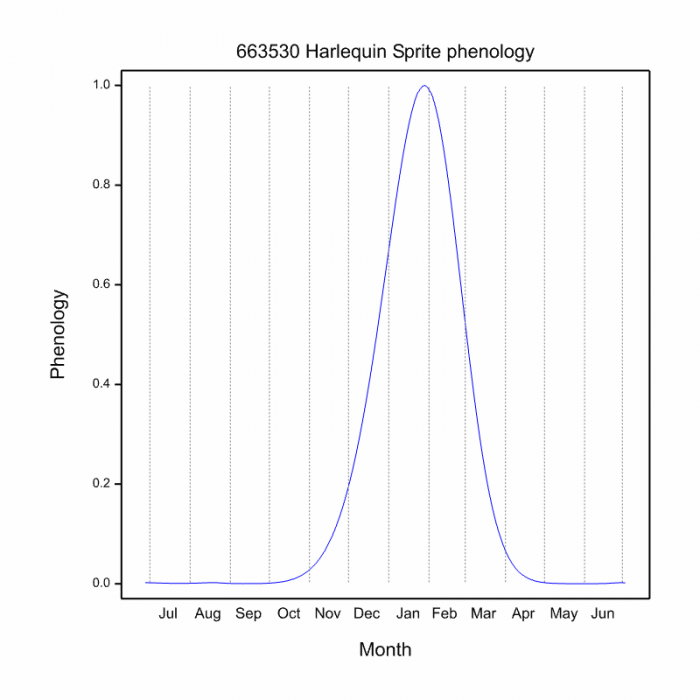View the above photo record (by Alan Manson) in OdonataMAP here.
Find the Harlequin Sprite in the FBIS database (Freshwater Biodiversity Information System) here.
Family Coenagrionidae
Pseudagrion newtoni – HARLEQUIN SPRITE
Identification
Small Size
Length up to 32mm; Wingspan attains 40mm.
Males are brightly coloured and are most similar to Pseudagrion hageni. Pseudagrion newtoni is far smaller and the terminal segments are bright blue, extending from segment 10 up to segment 7. In Pseudagrion hageni, the terminal segments are purple-blue and do not extend onto segment 7. In addition, the two species occupy very different habitats.
Females are similar to those of many other Pseudagrion species. They are best identified by their association with the males.
Click here for more details on identification.

Near Pomeroy, KwaZulu-Natal
Photo by Alan Manson
Habitat
Inhabits fast-flowing, rocky streams in upland areas. The preferred habitat consists of rich grasses, sedge and reeds overhanging clear, flowing water.
Behaviour
Although localised, Pseudagrion newtoni is often abundant where it occurs. Males sit in sunny locations among the stream-side grass where they actively engage each other. Females occupy the shady recesses of nearby bushes.
Recorded from November to March (see Phenology below).
Status and Conservation
The Harlequin Sprite is a poorly known species. It is Endemic to South Africa where it is rare and highly localised. Pseudagrion newtoni is listed as Vulnerable in the IUCN Red List of Threatened Species. This species is intolerant towards degradation of its habitat and is not known to occur at man-made habitats. None of the known sites are formally protected and, in some cases, the habitat is at risk from overgrazing and trample damage.
Distribution
Pseudagrion newtoni is Endemic to South Africa. It is only recorded from a handful of localities in the uplands of central KwaZulu-Natal and Mpumalanga.
Below is a map showing the distribution of records for Harlequin Sprite in the OdonataMAP database as at February 2020.

The next map below is an imputed map, produced by an interpolation algorithm, which attempts to generate a full distribution map from the partial information in the map above. This map will be improved by the submission of records to the OdonataMAP section of the Virtual Museum.


Ultimately, we will produce a series of maps for all the odonata species in the region. The current algorithm is a new algorithm. The objective is mainly to produce “smoothed” maps that could go into a field guide for odonata. This basic version of the algorithm (as mapped above) does not make use of “explanatory variables” (e.g. altitude, terrain roughness, presence of freshwater — we will be producing maps that take these variables into account soon). Currently, it only makes use of the OdonataMAP records for the species being mapped, as well as all the other records of all other species. The basic maps are “optimistic” and will generally show ranges to be larger than what they probably are.
These maps use the data in the OdonataMAP section of the Virtual Museum, and also the database assembled by the previous JRS funded project, which was led by Professor Michael Samways and Dr KD Dijkstra.
Phenology



